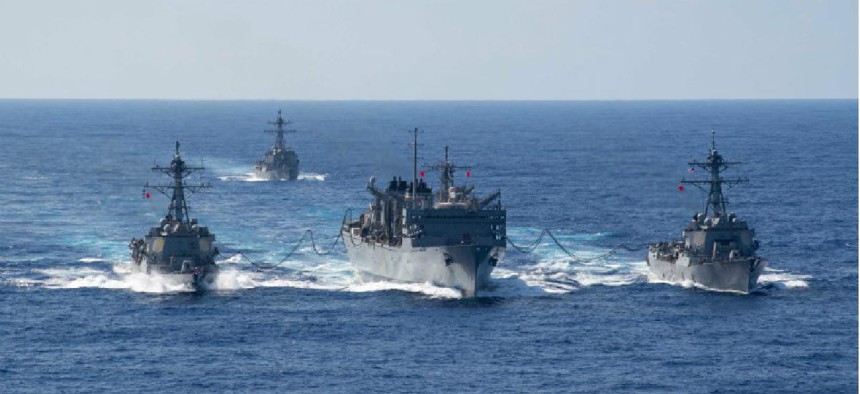Why cross-domain technology is key for radar and sonar data sharing
The Defense Department will need to embrace cross-domain technologies to closely monitor data transfers, allowing for increased data utility of any given system.
The amount of data the Defense Department collects has exploded with the number of increasingly sophisticated sensors on ships and submarines. And to tackle this, DOD will need to embrace cross-domain technologies.
Radar data, for example, is extremely time-sensitive and can offer crucial situational awareness beyond just the defense system. But there’s a catch: it must be securely shared.
That can be a complex challenge for military officers who need to routinely access information at multiple classification levels. Administrators must be able to take classified radar data and make it available to other internal unclassified systems, such as air traffic control systems.
Cross-domain technologies assist with this issue by fostering communication between networks and classification levels that would otherwise be kept separate. Without it, transferring radar data from a classified DOD system to an unclassified air traffic control wouldn’t happen because they don’t interconnect.
Cross domain technologies closely monitor data transfers to ensure only correct and authorized information transmits, allowing for increased data utility of any given system.
Radar data can be shared with other parties only after being analyzed, downgraded, and scrubbed of any details that shouldn’t be available for lower security levels. Being able to share that data allows for cost savings in the millions of dollars.
Ships and sensors
But there’s a different set of concerns for ships and other water vessels. While ships have more systems and sensors, they still have a limited amount of space. It’s only logical to leverage sophisticated, and long term cost-effective, sensors in a holistic manner, especially since doing so means more people will be making critical mission decisions based on larger amounts of high-quality information.
Cross domain technologies can also work in both directions, allowing information to go from a low classification to high. For example, the air traffic control system needs to adjust the power of the radar system to get more information about a certain area. It can send a request up through the cross domain guard, which looks at the data, makes sure it complies, then transfers it to a higher classification where the radar system is operating.
Another example of a low-to-high transition is with sonar data. With adversaries ramping up their submarine abilities, sonar is crucial to detecting unseen threats. Imagine a sonar mission system, allowing combat ships to track submarines in near-shore environments, protecting not just themselves, but also battle groups and other critical resources. A sensor sonar system gets dragged behind the ship or dropped as a sonobuoy that listens for sounds to detect nearby submarine adversaries. The data collected in this process is not classified, but often needs to be pushed up to a classified environment. This is much more practical and cost effective than installing and dragging two different systems—one classified, one unclassified—behind the ship.
Secure access across networks
Radar and sonar are just two examples of a long list of platforms ships are now equipped with, but the reality is that many are legacy stovepipe platforms with just one specific function. It’s crucial to consider how the data collected from one platform can be used across domains. Far too often, the existence of disparate platforms and the possibility that information could be transferred between parties of varying classification levels is completely overlooked. This leads to unnecessary spending, redundant systems, and sub-par operations—which all have tangible impacts on mission fighters in the field.
Cross domain technologies can remedy this situation. They provide secure, simultaneous access to multiple sensitive networks and allow critical data to be accessed and shared with the right people and systems, so they can keep all of us safe. Today the best cross domain solutions undergo significant security testing, such as meeting stringent guidelines set forth by the National Security Agency (NSA) Raise-The-Bar initiative.





